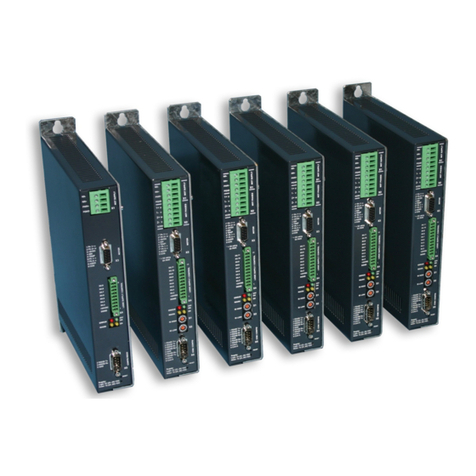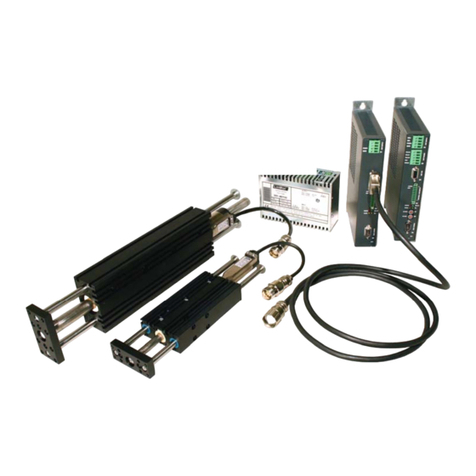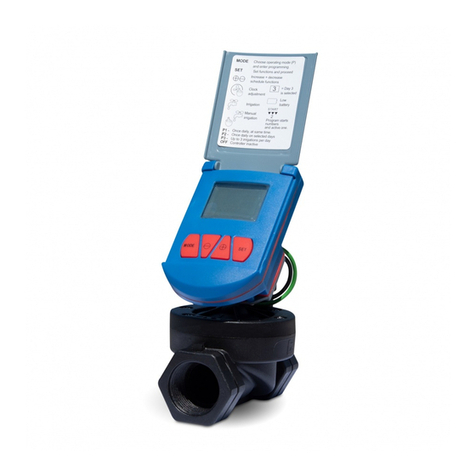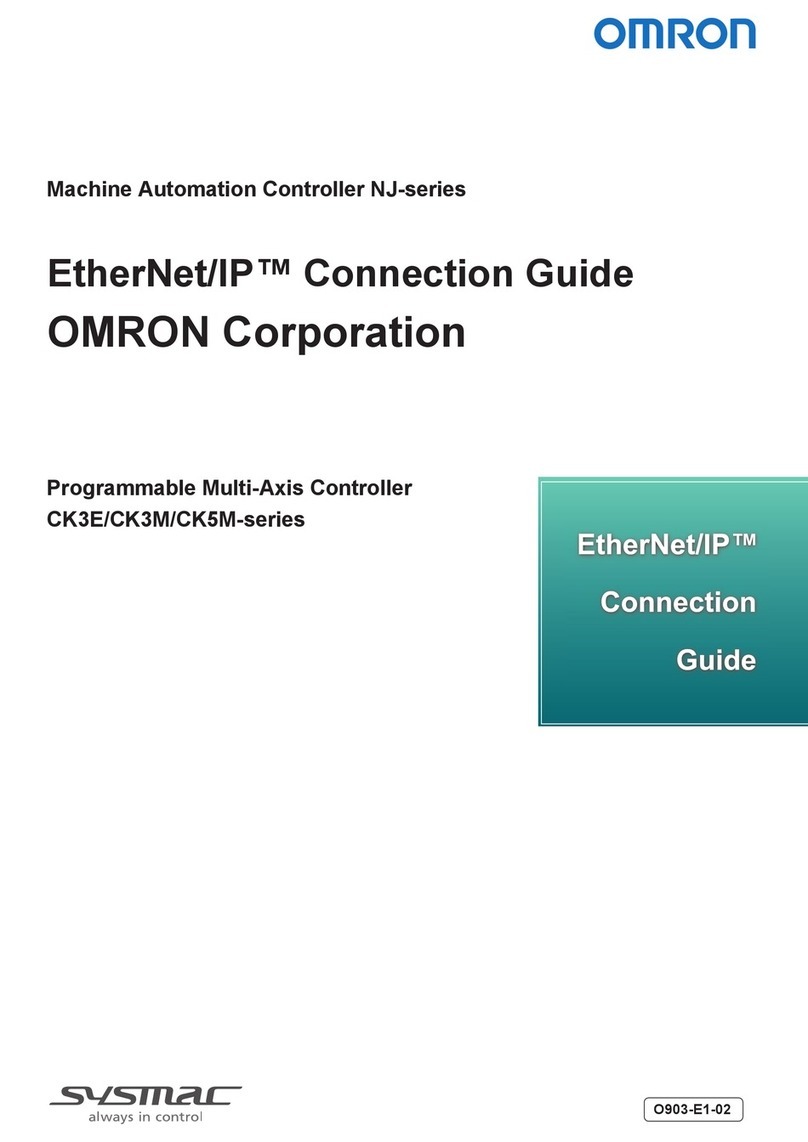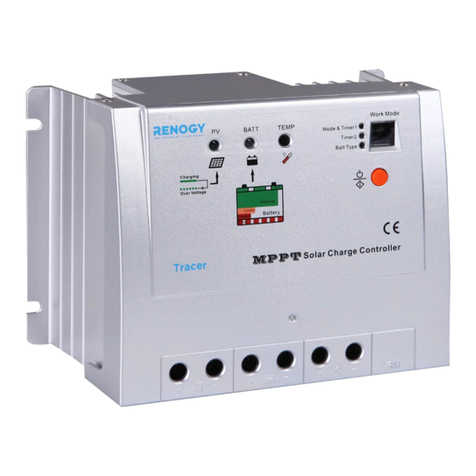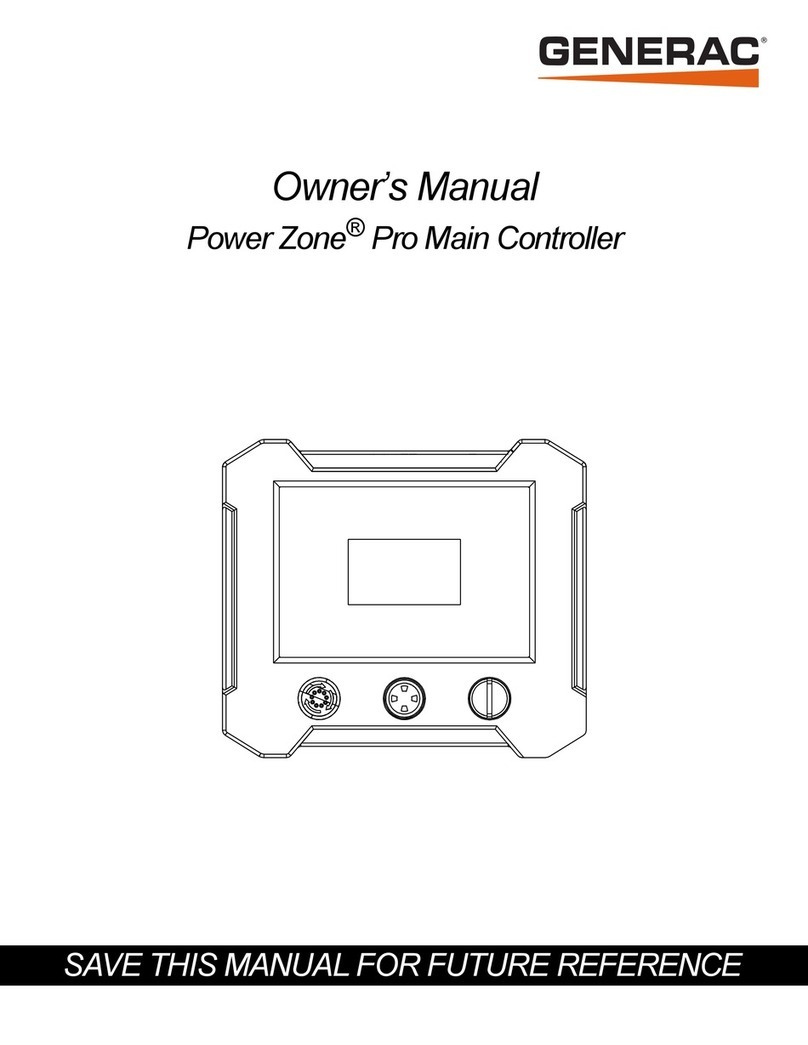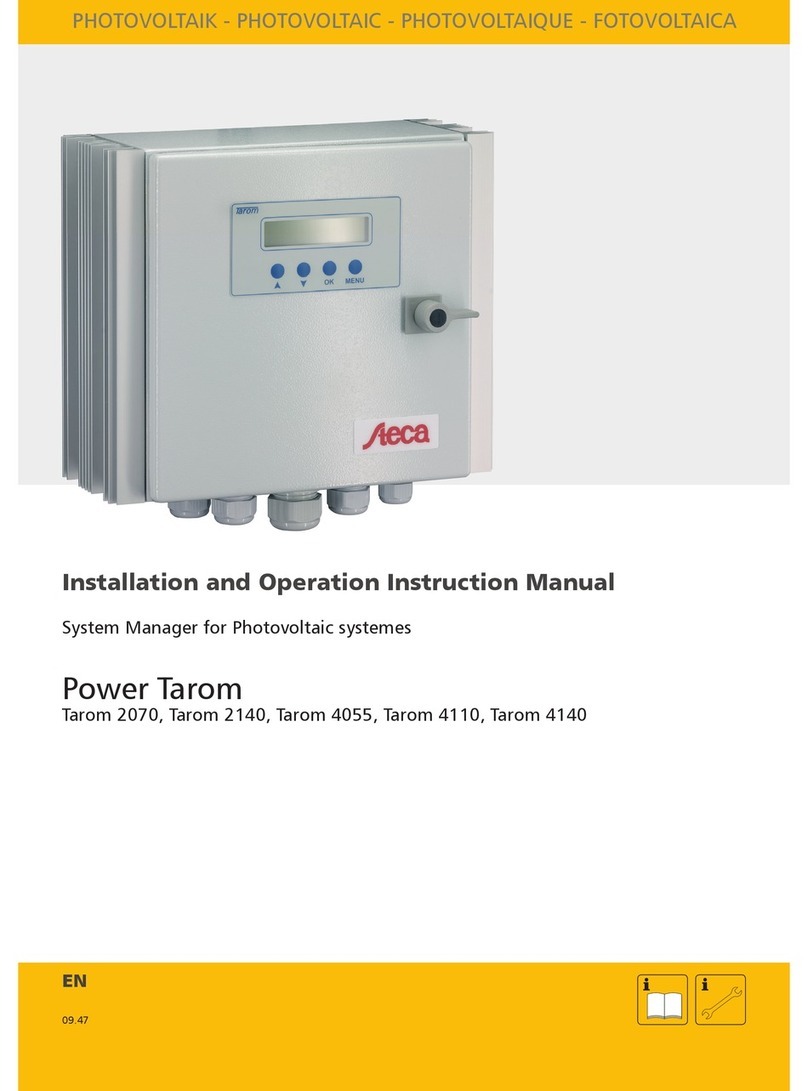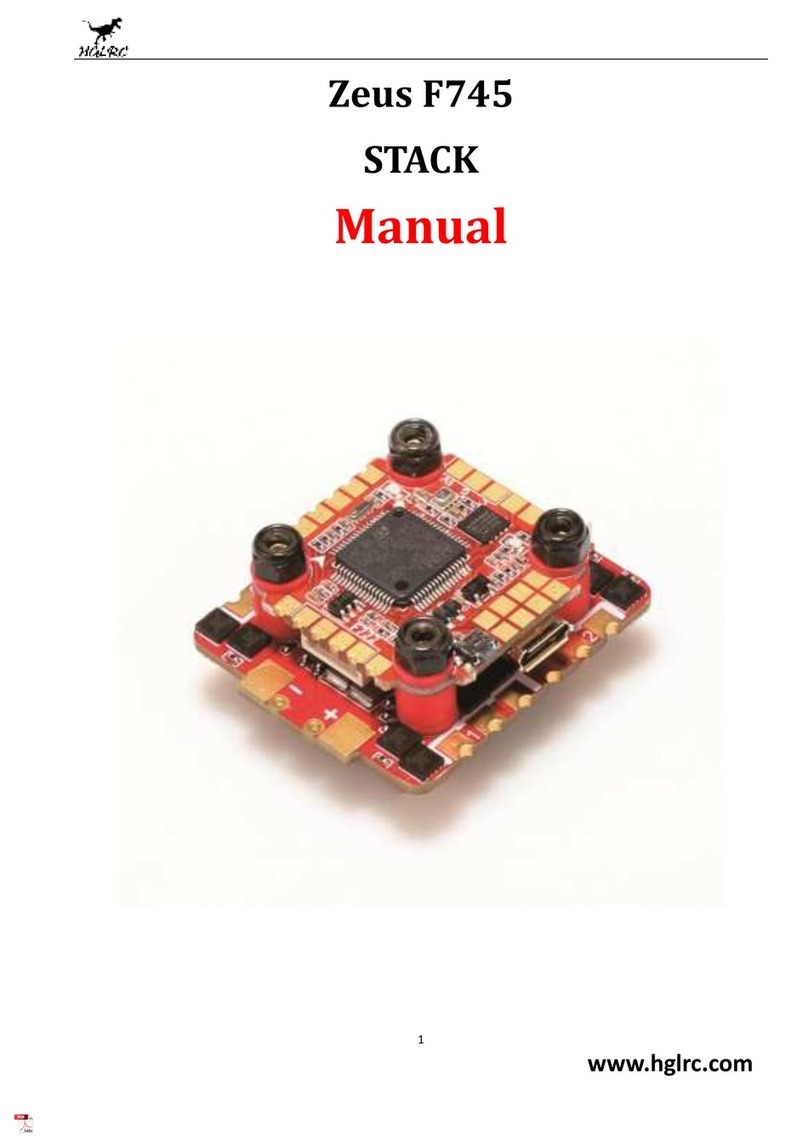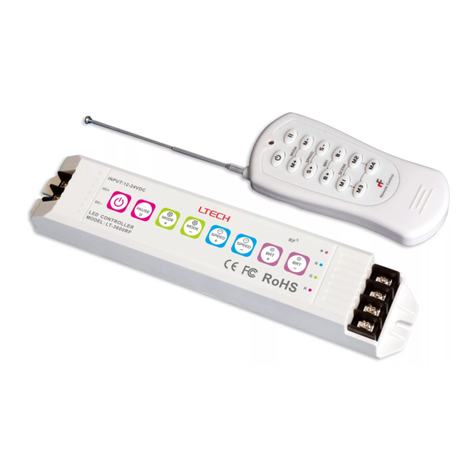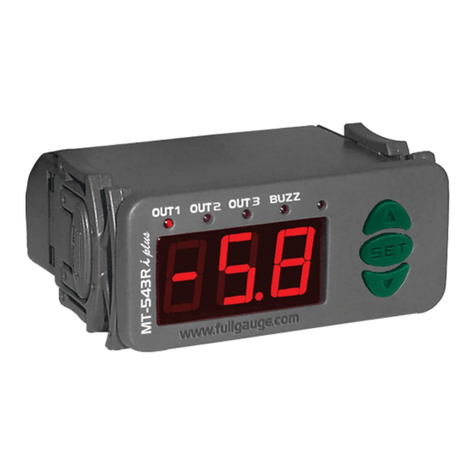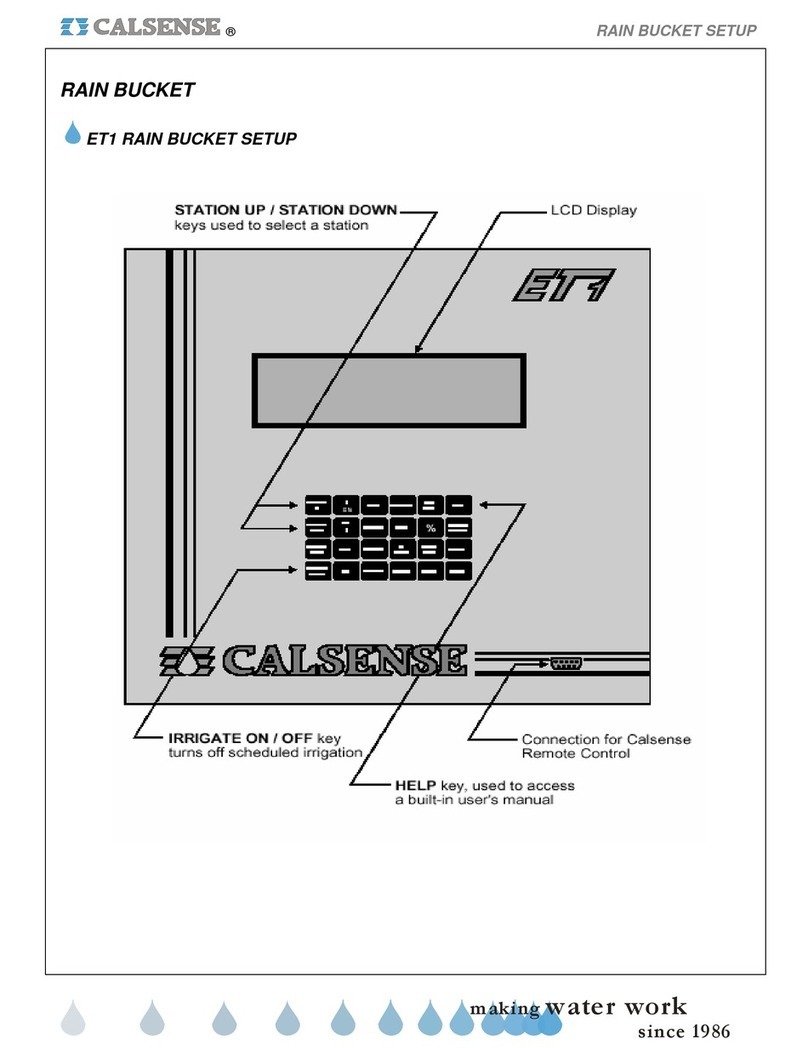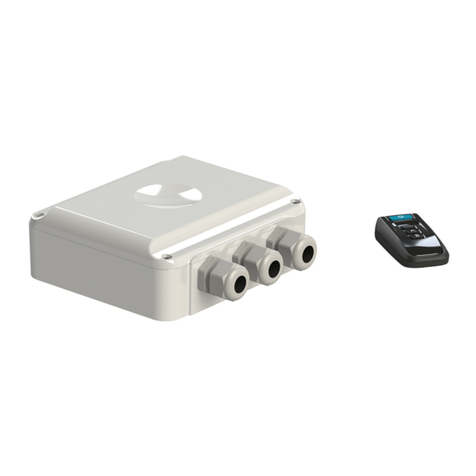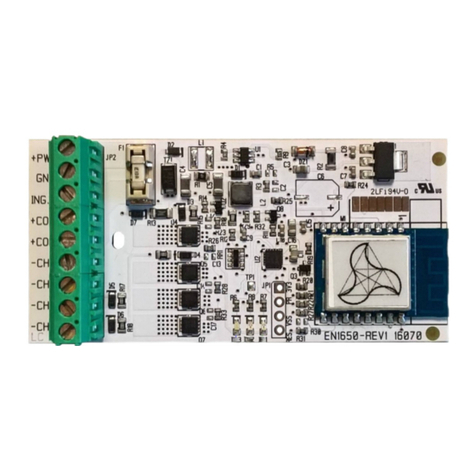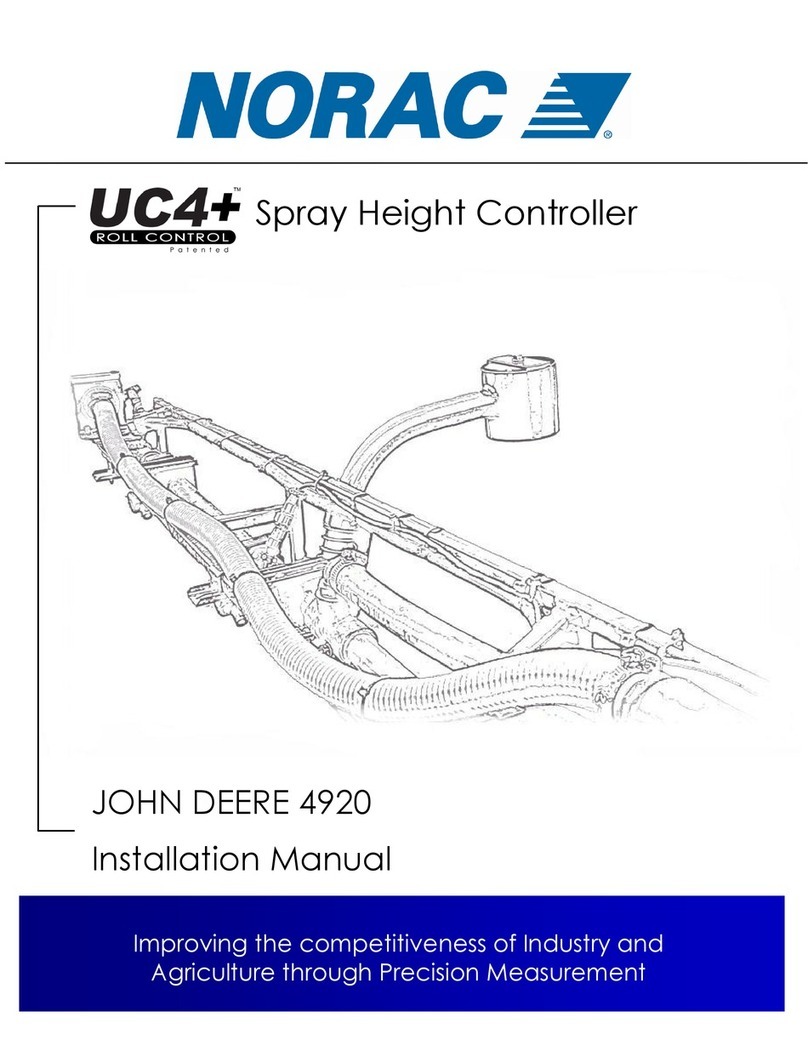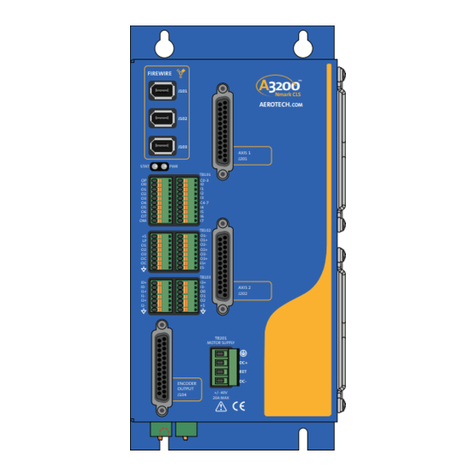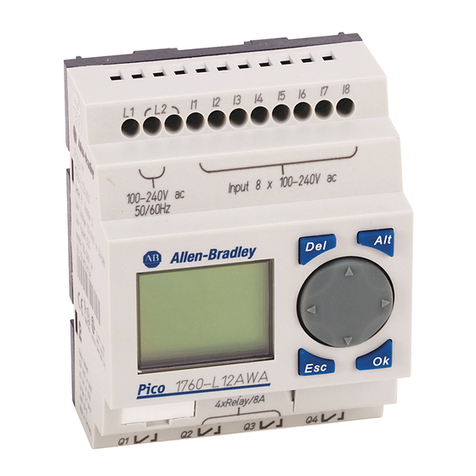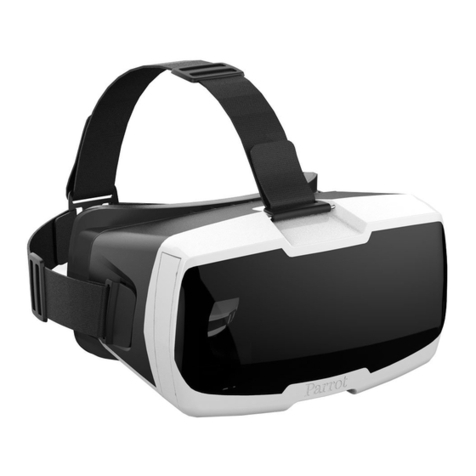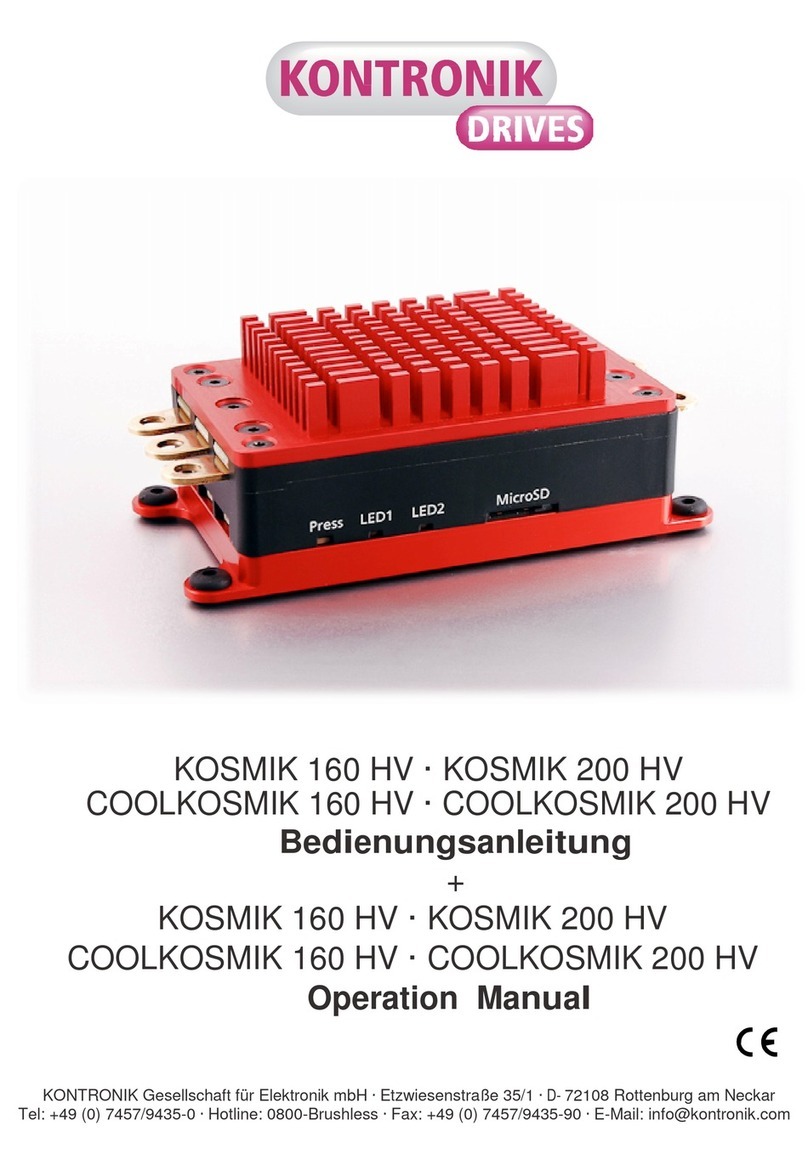LinMot Series E1400-GP User manual

January 2020
Documentation of the LinRS Interface for the following Drives:
·
Series E1100
·
Series B1100-GP
·
Series C1100-GP
·
Series E1200-GP
·
Series E1400-GP
Manual
LinRS Interface
Doc.: 0185-1082-E_3V27_MA_LinRS

© 2020 NTI AG
This work is protected by copyright.
Under the copyright laws, this publication may not be reproduced or transmitted in any form, electronic or
mechanical, including photocopying, recording, microfilm, storing in an information retrieval system, not even for
didactical use, or translating, in whole or in part, without the prior written consent of NTI AG.
LinMot® is a registered trademark of NTI AG.
Note
The information in this documentation reflects the stage of development at the time of press and is therefore
without obligation. NTI AG reserves itself the right to make changes at any time and without notice to reflect
further technical advance or product improvement.
NTI AG
LinMot
Bodenaeckerstrasse 2
CH-8957 Spreitenbach
Tel.: +41 56 419 91 91
Fax.: +41 56 419 91 92
Email: office@LinMot.com
Homepage: www.LinMot.com

Page 3 of 62NTI AG / LinMot
Table of Contents
1 System Overview .......................................................................................................................... 5
1.1 References ............................................................................................................................... 5
1.2 Definitions, Items, Shortcuts ...................................................................................................... 5
2 Connecting the RS bus .................................................................................................................. 6
2.1 Pin Out of the COM Connector (X5) (Series E1100 and B1100) ...................................................... 6
2.2 Pin Out of the System Connector (X19) (Series C1100, E1200, and E1400) .................................... 6
2.3 Pin Out of the CMD Connector (X7, X8): ...................................................................................... 6
3 Power Up Behaviour ..................................................................................................................... 7
3.1 Activating and Deactivating the LinRS Protocol ............................................................................ 7
3.2 ID and Baud Rate Selection ........................................................................................................ 8
3.2.1 Baud Rate Selection ............................................................................................................ 8
3.2.2 ID Selection ......................................................................................................................... 8
3.3 RS Topologies ........................................................................................................................... 9
3.3.1 3.3.1 RS232 Topology .......................................................................................................... 9
3.3.2 3.3.2 RS422 Topology .......................................................................................................... 9
3.3.3 3.3.3 RS485 Topology ........................................................................................................ 10
4 LinRS Message Format ............................................................................................................... 11
4.1 ID ........................................................................................................................................... 11
4.2 Length .................................................................................................................................... 11
4.3 Data ....................................................................................................................................... 11
4.4 Checksum .............................................................................................................................. 11
5 Message Data Definitions ............................................................................................................ 13
5.1 Message Main ID ..................................................................................................................... 13
6 Response Request ....................................................................................................................... 14
6.1 Configuration of the Default Response ....................................................................................... 14
6.2 Request Default Response Example .......................................................................................... 15
6.3 Default MC Response Request with Status Word Request Example ............................................. 16
7 Write Control Word ..................................................................................................................... 18
7.1 Write Control Word example 1 ................................................................................................... 18
7.2 Write Control Word example 2 ................................................................................................... 18
7.3 Write Control Word example 3 ................................................................................................... 19
8 Write Motion Command Interface ............................................................................................... 20
8.1 Write Motion Command Interface example 1 ............................................................................... 20
8.2 Write Motion Command Interface example 2 ............................................................................... 20
9 Parameter Message Group .......................................................................................................... 22
9.1 Parameter/Variable Read RAM example ..................................................................................... 23
9.2 Parameter Write RAM example ................................................................................................. 23
10 Parameter Configuration Message Group ................................................................................. 25
10.1 Parameter Configuration Read ROM value example ................................................................... 26
10.2 Parameter Configuration read out changed Parameters .............................................................. 29
10.3 Parameter Configuration Read out UPID List ............................................................................ 29
10.4 Parameter Configuration Defaulting SW-Instance Parameters .................................................... 31
11 Curve Configuration Message Group (not on B1100) .................................................................. 32
11.1 Read Curve From Servo Example ............................................................................................ 35
11.2 Write Curve To Servo Example ................................................................................................ 37
12 Command Table Configuration Message Group (not on B1100) ................................................. 39
12.1 Read Command Table Entry From Servo Example .................................................................... 44

Page 4 of 62 NTI AG / LinMot
12.2 Write Command Table Entry To Servo Example ........................................................................ 45
13 Program Handling Message Group ............................................................................................ 46
13.1 Reset Drive with Response after completion ............................................................................. 46
13.2 Reset Drive with immediate Response ...................................................................................... 47
13.3 Stop MC- and Application SW ................................................................................................. 47
13.4 Start MC- and Application SW with Response after completion ................................................... 48
13.5 Start MC- and Application SW with immediate Response ........................................................... 49
14 Read Error Info Message Group ................................................................................................. 50
14.1 Get error short text of actual error ............................................................................................ 50
14.2 Get error short text of defined error code .................................................................................. 51
14.3 Get error counters of error log and total occurred errors ............................................................. 52
14.4 Get error log entry .................................................................................................................. 53
15 LinRS Parameters ..................................................................................................................... 55
15.1 Dis-/Enable ........................................................................................................................... 55
15.2 RS Config .............................................................................................................................. 55
15.3 RS Select .............................................................................................................................. 55
15.4 RS Parameter Def .................................................................................................................. 55
15.5 Baud Rate ............................................................................................................................. 55
15.5.1 Baud Rate Source Select .................................................................................................. 55
15.5.2 Baud Rate Parameter Definition ......................................................................................... 56
15.6 Stop Bit ................................................................................................................................. 56
15.7 Parity .................................................................................................................................... 56
15.8 Protocol Config ...................................................................................................................... 56
15.9 MACID .................................................................................................................................. 56
15.9.1 MACID Source Select ....................................................................................................... 56
15.9.2 MACID Parameter Definition .............................................................................................. 57
15.10 Checksum ........................................................................................................................... 57
15.10.1 Checksum Start Value .................................................................................................... 58
15.11 Receive Time Out ................................................................................................................. 58
15.12 MC Response Configuration .................................................................................................. 58
15.13 Error .................................................................................................................................... 59
15.13.1 Error Detection Mask ...................................................................................................... 59
15.14 Respond On Msg With Error .................................................................................................. 59
16 Error .......................................................................................................................................... 60
16.1 LinRS Error Codes ................................................................................................................. 60
17 Troubleshooting ........................................................................................................................ 60
17.1 Stopping LinRS on B1100 Drives ............................................................................................. 60
18 Accessories ................................................................................................................................ 61
18.1 Ordering information ............................................................................................................... 61

Page 5 of 62NTI AG / LinMot
1 System Overview
The LinMot drives of the E1100 series, B1100-GP, E1200-GP, C1100-GP, and E1400-GP support the LinRS
communication profile. LinRS is a LinMot specific RS protocol to run the drives over RS232, RS422, or RS485
serial links (RS232 on C1100 drives supported with FW >=6.9).
Attention: It is strongly recommended, to use an isolated RS device on master side (e.g. Art. No.
0150-3110 or 0150-3356)!
Attention: When running the E1100 drive over an RS connection with LinRS, the configuration and
debugging can be done over the CAN bus link. LinMot-Talk supports an USB to CAN (Part No.
0150-3532) converter for this purpose. It is strongly recommended to use this USB to CAN
converter, to avoid programming debugging disappointment.
For the installation and use of the USB to CAN converter refer to document [3].
1.1 References
Ref
Title
Source
1
User Manual Motion Control SW
www.linmot.com
2
LinMot Drive Configuration over Fieldbus Interfaces
www.linmot.com
3
Installation Guide USB-CAN Converter
www.linmot.com
The documentation is distributed with the LinMot-Talk software.
1.2 Definitions, Items, Shortcuts
Shortcut
Meaning
LM
LinMot linear motor
OS
Operating System (Software)
MC
Motion Control (Software)
Intf
Interface (Software)
Appl
Application (Software)
UPID
Unique Parameter ID (16 bit)
CT
Command Table
Msg
Message
Cmd
Command

Page 6 of 62 NTI AG / LinMot
2 Connecting the RS bus
2.1 Pin Out of the COM Connector (X5) (Series E1100 and B1100)
X5
COM Connector
Pin
Assignment
1
2
3
4
5
6
7
8
9
RS-485 Tx+
RS-232 TX
RS-232 RX
RS-485 Rx+
GND (100 )
RS-485 Rx-
RS-485 Tx-
CAN L
CAN H
Over this connector the RS232 or the RS422/RS485 serial lines are available.
2.2 Pin Out of the System Connector (X19) (Series C1100, E1200, and E1400)
X19
ETHERCAT Connector
Pin
Assignment
1
2
3
4
5
6
7
8
case
Do not connect
Do not connect
RS232 RX
GND
GND
RS232 TX
Do not connect
Do not connect
-
RJ-45
Use standard patch cables (twisted pair, S/UTP, AWG26) for wiring. This type of
cable is usually referred to as a “Cat5e-Cable”.
C1100: S4.1 selects the communication channel used for LinMot-Talk communication. OFF (Default): System
RS232 on X19, ON: System RS485 on X7/8. If the installed interface is LinRS, the interface will automatically
use the other channel. (supported with FW >=6.9)
2.3 Pin Out of the CMD Connector (X7, X8):
The CMD connector exists on the series E1100 (except E1100-GP), B1100-GP, E1200-GP, C1100-GP, and
E1400-GP drives, 2xRJ45 with 1:1 connected signals. Standard twisted pairs: 1/2, 3/6, 4/5, 7/8. Use Ethernet
cables according the EIA / TIA 568A standard.
X7 – X8
CMD Connector
Pin
Assignment 100BASE-TX

Page 7 of 62NTI AG / LinMot
1
2
3
4
5
6
7
8
case
RS485 Rx+
RS485 Rx-
RS485 Tx+
Ground (1k )
Ground (1k )
RS485 Tx-
CAN H
CAN L
-
RJ-45
Use standard patch cables (twisted pair, S/UTP, AWG26) for wiring. This type of
cable is usually referred to as a “Cat5e-Cable”.
C1100: S4.1 selects the communication channel used for LinMot-Talk communication. OFF (Default): System
RS232 on X19, ON: System RS485 on X7/8. If the installed interface is LinRS, the interface will automatically
use the other channel. (supported with FW >=6.9)
3 Power Up Behaviour
The power up behaviour can be defined over the S3 switches and the S1 and S2 hex switches and the
parameter configuration. So the drive can be configured over the LinRS protocol. It is possible to set up
completely the drive over LinRS when the LinRS software has been installed.
Attention: On the B1100 there are no switches to define the baud rate, ID and interface enable, for
this reason all configuration has to be done by parameter with LinMot-Talk software over CAN-Bus.
3.1 Activating and Deactivating the LinRS Protocol
Over the Interface Switch S3 the LinRS protocol can be activated (S3.4 position On) or deactivated (S3.4
position Off). This switch is only available on the E1100 drive.
If the Interface Switch S3.4 is off while the system is booting, the LinRS will be deactivated for the rest of this
power cycle. In this case the drive can normally be accessed with the LinMot-Talk software over the RS or CAN
link, for configuration and testing.
If the Interface Switch S3.4 is on while the system is booting, the LinRS protocol will be activated. The RS line
of the drive is no longer available for the LinMot-Talk software. In this case configuring, debugging and testing
can only be done over the CAN link. Now switching off the interface to off reactivates the RS line for the LinMot-
Talk software, then switching on again, reinstall the LinRS protocol for the RS line. This enables some
debugging capabilities without running the LinMot-Talk software over the CAN bus. It is recommended to use
the USB to CAN converter, when working with the LinRS protocol for configuring and debugging.
With the RS485/RS232 switch on S3 the bus driver can be selected.

Page 8 of 62 NTI AG / LinMot
3.2 ID and Baud Rate Selection
With the default parametrization the baud rate can be selected over S1 and the ID is selected over S2.
3.2.1 Baud Rate Selection
The baud rate can be defined over the S1 hex switch (default setting) or by parameter value.
S1 Baud Rate Code Table
S1 Value
Selected Baud Rate
0h
Undefined Baud Rate
1h
4800Bit/s
2h
9600 Bit/s
3h
19200 Bit/s
4h
38400 Bit/s
5h
57600 Bit/s
6h
115200 Bit/s
7h
Undefined Baud Rate
8h-Fh
Undefined Baud Rate
3.2.2 ID Selection
Like the baud rate the protocol ID can be defined over the S2 hex switch (default setting), by parameter value or
by the S1&S2 hex switches.
S2 ID code table
S2 Value
Selected MACID
0h
MACID = 00h
1h
MACID = 01h
2h
MACID = 02h
...
...
Fh
MACID = 0Fh
S1&S2 ID code table
S1 Value
S2 Value
Selected MACID
0h
0h
MACID = 00h
0h
1h
MACID = 01h
0h
2h
MACID = 02h
...
...
...
1h
0h
MACID = 10h
...
...
...
Fh
Fh
MACID = FFh

Page 9 of 62NTI AG / LinMot
3.3 RS Topologies
3.3.1 3.3.1 RS232 Topology
Over a RS232 line only one slave can be connected to the master, controlling several slaves needs
several RS232 lines.
The RS232 serial lines are only on the COM connector X5 available.
3.3.2 3.3.2 RS422 Topology
With the RS422 topology several Slaves can be accessed. The master transmit lines are connected to all slave
receive lines and all slave transmit lines are connected with the master receive lines. With this topology
debugging is quiet easy because the master and slave communication is separated. The easiest way to loop
through the communication lines at slave side, are over the X7/X8 RJ45 connectors with the RS/DP drives.
Activate RS485 Term on S3.2 (S4.2 on B1100/C1100 series or S5.2 on E1200 and E1400 series) on the last
slave drive.
Attention: With B1100/C1100 the switch S4.1 has to be set correctly in order to select RS485 for
LinRS!

Page 10 of 62 NTI AG / LinMot
3.3.3 3.3.3 RS485 Topology
With the RS485 topology also several Slaves can be accessed. The master transmit lines are connected to all
slave receives lines and all slave transmit lines are connected with master receive lines. With this topology
debugging is quiet easy because master communication and slave communication is separated. The easiest
way to loop through the communication lines at slave side, are over the X7/X8 RJ45 connectors with the RS/DP
drives, but at the first slave the RS485 AB lines from the master have to be connected with the Rx and the Tx
signal lines. Activate RS485 Term on S3.2 (S4.2 on B1100/C1100 series or S5.2 on E1200 and E1400 series)
on the last slave drive.
Attention: With B1100/C1100 the switch S4.1 has to be set correctly in order to select RS485 for
LinRS!

Page 11 of 62NTI AG / LinMot
4 LinRS Message Format
The following tables define the principle structure of a LinRS Message.
Header
Data
Opt. Checksum
End
Start
Header
ID
Len
Start
Data 0
Data 1
Msg ID
Low
Data 2
Msg ID
High
…
Data
n-1
Check-
Sum
Low
Check-
Sum
High
End
Tele-
gram
01h
0..FFh
2..63
02h
0..FFh
0..FFh
0..FFh
0..FFh
0..FFh
0..FFh
04h
Length Count
Checksum Calculation
Byte Nr
Name
Description
Value
0
Start Header
Fix ID at telegram start
01h
1
ID
ID of LinMot Drive
0..FFh
2
Length
Length of telegram data n
2..63
3
Start Data 0
Fix ID at telegram start
02h
4
Data 1 Msg ID Low
Message Sub ID
0..FFh
5
Data 2 Msg ID High
Message Main ID
0..FFh
6
Data 3
Message data 0
0..FFh
..
..
..
0..FFh
n+2
Data n-1
Message data n-1
0..FFh
n+3
Checksum Low
Optional checksum Low Byte
0..FFh
n+4
Checksum High
Optional checksum High Byte
0..FFh
n+5/n+3
End Telegram
Fix ID at telegram end
04h
Data are transmitted lowest byte first highest byte last. Dummy Data could be added to get a fix master
transmission length.
4.1 ID
The ID is one byte that defines the address (ID) of the LinMot drive. This ID is defined by two Hex Switches or
by a parameter.
4.2 Length
The length defines the data length in bytes.
4.3 Data
In the data fields the command specific data are transmitted.
4.4 Checksum
The checksum field is optional. Three different methods are supported (UPID 2080h):
·
Byte wise addition and modulo 2^16 (fast and easy)
·
CRC-16-CCITT: Polynomial 1021h (input/result/start value bitwise reflected)
·
CRC-16-CCITT: Polynomial 1021h

Page 12 of 62 NTI AG / LinMot
Additionally the checksum start value can be defined (UPID 20AAh).

Page 13 of 62NTI AG / LinMot
5 Message Data Definitions
5.1 Message Main ID
The Message object are identified in a first level by following main Message IDs
Message
Main ID
B1100
Description
00h
Yes
Response Request / Response itself
01h
Yes
Write Control Word
02h
Yes
Write Motion Command Interface
03h
Yes
Parameter Message Group with default Response
04h
-
Curve Configuration Message Group
05h
-
Parameter Configuration Message Group
06h
Yes
Program Handling Message Group
07h
-
Read Error Info Message Group
08h
-
Command Table Configuration Message Group
In the easiest way of using the LinRS protocol, only the Messages with the Main IDs (0), 1 and 2 are needed to
control the behavior of the drive.
The other Main messages IDs are only needed if configuration or setup functionality over the LinRS protocol is
needed and supported. In these cases a much deeper integration of the LinMot drive into the superior PLC/IPC
is supported and needed.
As an alternative to this, LinMot offers a configuration service, which means you can store your configuration
with LinMot and order the drive with installed firmware and configuration (parameter and curves). In many cases
this will be the more cost effective solution.
For debugging reasons and to get familiar with the LinRS protocol the LinMot-Talk has an integrated LinRS test
tool (Tools\LinRS Test Tool). Together with the USB to CAN converter the steps could be followed directly as
shown below.

Page 14 of 62 NTI AG / LinMot
6 Response Request
The response to the Response Request is added to the configured response data, or set to the configured
reserved space.
Message
Main ID
Message
Sub ID
Description
00h
00h
Default MC Response Answer (Slave)
00h
01h
Default MC Response Request (Master)
00h
02h
Default MC Response Request with Status Word Request (Master)
00h
03h
Default MC Response Request with Warn Word Request (Master)
00h
04h
Default MC Response Request with State Var Request (Master)
00h
40h
Slave Response to Master Curve Request
00h
5yh
Slave Response to Master Parameter Request
00h
60h
Slave Response to Master Program Handling Request
00h
7yh
Slave Response to Master Read Error Requests
00h
8yh
Slave Response to Master Command Table Request
Every time the drive has accepted a message, it will respond with a message itself. Normally the response
contains the configured data.
6.1 Configuration of the Default Response
The content of the default response can be configured, so the information for the normal operation can be
adapted to the application needs. The order of the information is the same as they appear in the LinMot-Talk
configuration tool. The Default Response is normally responded within the time >0.5ms..<1.5ms. The bold
named entries are configured in default configuration (factory setting) of the LinRS firmware installation.
Name
Format
Description
Communication State
1 bytes
Status of communication (Checksum error,..) (Default Cfg)
Status Word
2 bytes
Status Word bit coded (Default Cfg)
State Var
2 bytes
High byte state number, low byte state depending (Default Cfg)
Error Code
2 bytes
Error Code
Warn Word
2 bytes
Warn Word bit coded
Echo MC Intf Header
2 bytes
Echo of the motion command interface header
Monitoring Channel 1
4 bytes
Monitoring Channel 1 Data (Default Cfg)
Monitoring Channel 2
4 bytes
Monitoring Channel 2 Data
MC Response
4 bytes
Place holder for a response request

Page 15 of 62NTI AG / LinMot
6.2 Request Default Response Example
The following example documents a default response request, the drive will answer with the configured default
response. This request could be used to monitor state changes or direct variable changes.
Request: default response
Byte
Offset
Value
Description
0
01h
Fix ID Telegram start
1
11h
Response node ID
2
03h
Telegram length
3
02h
Fix ID start data
4
01h
Message Sub ID (default response request)
5
00h
Message Main ID (Response)
6
04h
Fix ID telegram end
Response: Default Response
Byte
Offset
Value
Description
0
01h
Fix ID telegram start
1
11h
MACID
2
0Ch
Data length
3
02h
Fix ID start data
4
00h
Sub ID: Default Response
5
00h
Main ID: Response Message
6
00h
Communication State ok
7
37h
Status Word Low Byte
8
4Ch
Status Word High Byte
9
C2h
State Var Low Byte
10
08h
State Var High Byte (MainState)
11
9Dh
Actual Position Low Word Low Byte
12
FCh
Actual Position Low Word High Byte
13
FFh
Actual Position High Word Low Byte
14
FFh
Actual Position High Word High Byte
15
04h
Fix ID telegram end
Example:
Tx: 01 11 03 02 01 00 04
Rx: 01 11 0C 02 00 00 00 37 4C C2 08 9D FC FF FF 04

Page 16 of 62 NTI AG / LinMot
6.3 Default MC Response Request with Status Word Request Example
The following example documents a Default MC Response Request with Status Word Request, the drive will
answer with the configured default response and adds the Status Word in a 4Byte Container at the end of the
data section.
Request: Default MC Response Request with Status Word Request
Byte
Offset
Value
Description
0
01h
Fix ID Telegram start
1
11h
Response node ID
2
03h
Telegram length
3
02h
Fix ID start data
4
02h
Message Sub ID (default response request)
5
00h
Message Main ID (Response)
6
04h
Fix ID telegram end
Response: Default MC Response Request with Status Word Request
Byte
Offset
Value
Description
0
01h
Fix ID telegram start
1
11h
MACID
2
10h
Data length
3
02h
Fix ID start data
4
00h
Sub ID: Default Response with Status Word
5
00h
Main ID: Response Message
6
00h
Communication State ok
7
37h
Status Word Low Byte
8
4Ch
Status Word High Byte
9
C2h
State Var Low Byte
10
08h
State Var High Byte (MainState)
11
9Dh
Actual Position Low Word Low Byte
12
FCh
Actual Position Low Word High Byte
13
FFh
Actual Position High Word Low Byte
14
FFh
Actual Position High Word High Byte
15
B4h
Low Byte Status Word
16
00h
High Byte Status Word
17
00h
No Meaning
18
00h
No Meaning
19
04h
Fix ID telegram end
Examples:

Page 17 of 62NTI AG / LinMot
Tx:
01 11 03 02 02 00 04
; Request Default Response with Status Word
Rx:
01 11 10 02 00 00 00 B4 00 00 02 D5 6A 10 00 B4 00 00 00 04
Tx:
01 11 03 02 03 00 04
; Request Default Response with Warn Word
Rx:
01 11 10 02 00 00 00 B4 00 00 02 D5 6A 10 00 80 00 00 00 04
Tx:
01 11 03 02 04 00 04
; Request Default Response with State Var
Rx:
01 11 10 02 00 00 00 B4 00 00 02 D5 6A 10 00 00 02 00 00 04

Page 18 of 62 NTI AG / LinMot
7 Write Control Word
With the access to the Control Word the main state machine could be controlled.
Message Main ID
Message Sub ID
Description
01h
00h
Write Control Word
With the following examples the first steps in runtime programming should be explained. To this message
request the LinMot drive will always answer with the default motion response.
7.1 Write Control Word example 1
With this control word command the lock state is cleared
Request: Write Control Word (Clear Control Word)
Byte
Offset
Value
Description
0
01h
Fix ID Telegram start
1
11h
Destination node ID
2
05h
Telegram length
3
02h
Fix ID start data
4
00h
Message Sub ID
5
01h
Message Main ID (Write Control Word)
6
00h
Control Word Low Byte
7
00h
Control Word High Byte
8
04h
Fix ID telegram end
This request is answered with the Default Response.
Example:
Tx:
01 11 05 02 00 01 00 00 04
Rx:
01 11 0C 02 00 00 00 B4 40 00 02 AB 00 00 00 04
7.2 Write Control Word example 2
With this control word command causes a transition to enable state and starts homing.
Request: Write Control Word (Set all Bits for Operation and Home Flag)
Byte
Offset
Value
Description
0
01h
Fix ID Telegram start
1
11h
Destination node ID
2
05h
Telegram length
3
02h
Fix ID start data
4
00h
Message Sub ID
5
01h
Message Main ID (Write Control Word)

Page 19 of 62NTI AG / LinMot
Byte
Offset
Value
Description
6
3Fh
Control Word Low Byte
7
08h
Control Word High Byte
8
04h
Fix ID telegram end
Example:
Tx:
01 11 05 02 00 01 3F 08 04
Rx:
01 11 0C 02 00 00 00 B6 40 00 02 A8 00 00 00 04
To detect when the homing sequence has finished, poll the drive until the low byte in the StateVar is 0Fh and
the main state = 09h (homing) high byte of the state var.
Example:
Tx:
01 11 05 02 00 01 3F 08 04
Rx:
01 11 0C 02 00 00 00 B7 22 01 09 65 0E FB FF 04
Tx:
01 11 05 02 00 01 3F 08 04
Rx:
01 11 0C 02 00 00 00 B7 22 01 09 8B A3 F7 FF 04
Tx:
01 11 05 02 00 01 3F 08 04
Rx:
01 11 0C 02 00 00 00 B7 62 0C 09 4D 24 FF FF 04
Tx:
01 11 05 02 00 01 3F 08 04
Rx:
7.3 Write Control Word example 3
With this control word command the normal operation is enabled.
Request: Write Control Word (Set all Bits for Operation and Reset Home Flag)
Byte
Offset
Value
Description
0
01h
Fix ID Telegram start
1
11h
Destination node ID
2
05h
Telegram length
3
02h
Fix ID start data
4
00h
Message Sub ID
5
01h
Message Main ID (Write Control Word)
6
3Fh
Control Word Low Byte
7
00h
Control Word High Byte
8
04h
Fix ID telegram end
Example:
Tx:
01 11 05 02 00 01 3F 00 04
Rx:
01 11 0C 02 00 00 00 37 4C 00 09 3C FC FF FF 04
Poll again to make sure main state 08h is reached.
Tx:
01 11 05 02 00 01 3F 00 04
Rx:
01 11 0C 02 00 00 00 37 4C C0 08 DA FB FF FF 04
‘Operation Enabled’ state reached with homed flag set

Page 20 of 62 NTI AG / LinMot
8 Write Motion Command Interface
With the access to the Motion Command Interface of the MC-SW [1], the run time motion could be controlled.
There are a lot of different motion commands, which are described in [1] for the different needs of the
applications.
Message Main ID
Message Sub ID
Description
02h
00h
Write Motion Control Interface
8.1 Write Motion Command Interface example 1
With this motion command a VA-interpolator motion with default parameters for (max. velocity and acceleration
and deceleration) to the target position 10mm is defined.
Byte
Offset
Value
Description
0
01h
Fix ID Telegram start
1
11h
Destination node ID
2
09h
Telegram length
3
02h
Fix ID start data
4
00h
Message Sub ID
5
02h
Message Main ID (Motion Command Interface)
6
01h
Motion Cmd Intf Header Low Byte (count =1) Sub ID =0
7
02h
Motion Cmd Intf Header High Byte Master ID =2
8
A0h
Target Position lowest byte
9
86h
Target Position middle low byte
10
01h
Target Position middle high byte
11
00h
Target Position highest byte
12
04h
Fix ID telegram end
Example:
Tx:
01 11 09 02 00 02 01 02 A0 86 01 00 04
Rx:
01 11 0C 02 00 00 00 37 68 A1 08 8B FC FF FF 04
8.2 Write Motion Command Interface example 2
Go back with the same motion command to 0mm.
Byte
Offset
Value
Description
0
01h
Fix ID Telegram start
1
11h
Destination node ID
2
09h
Telegram length
3
02h
Fix ID start data
4
00h
Message Sub ID
5
02h
Message Main ID (Motion Command Interface)
This manual suits for next models
4
Table of contents
Other LinMot Controllers manuals

LinMot
LinMot B1100-PP User manual

LinMot
LinMot C1250-PD-XC-0S/1S User manual
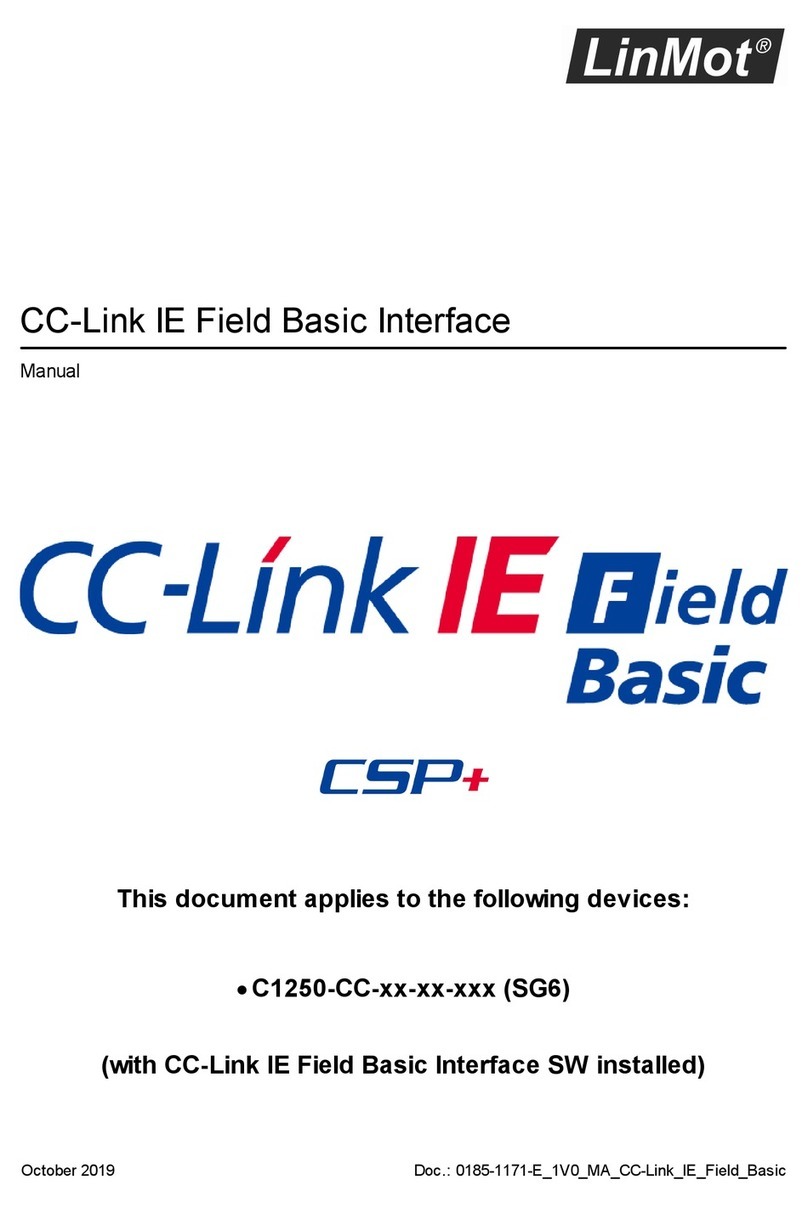
LinMot
LinMot CC-Link IE Field Basic C1250-CC Series User manual

LinMot
LinMot E1100-CO Instruction Manual
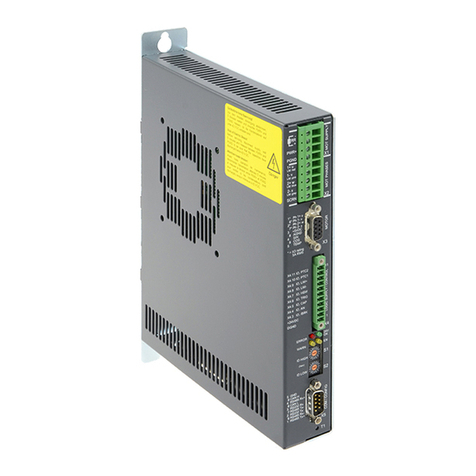
LinMot
LinMot E1100-GP User manual
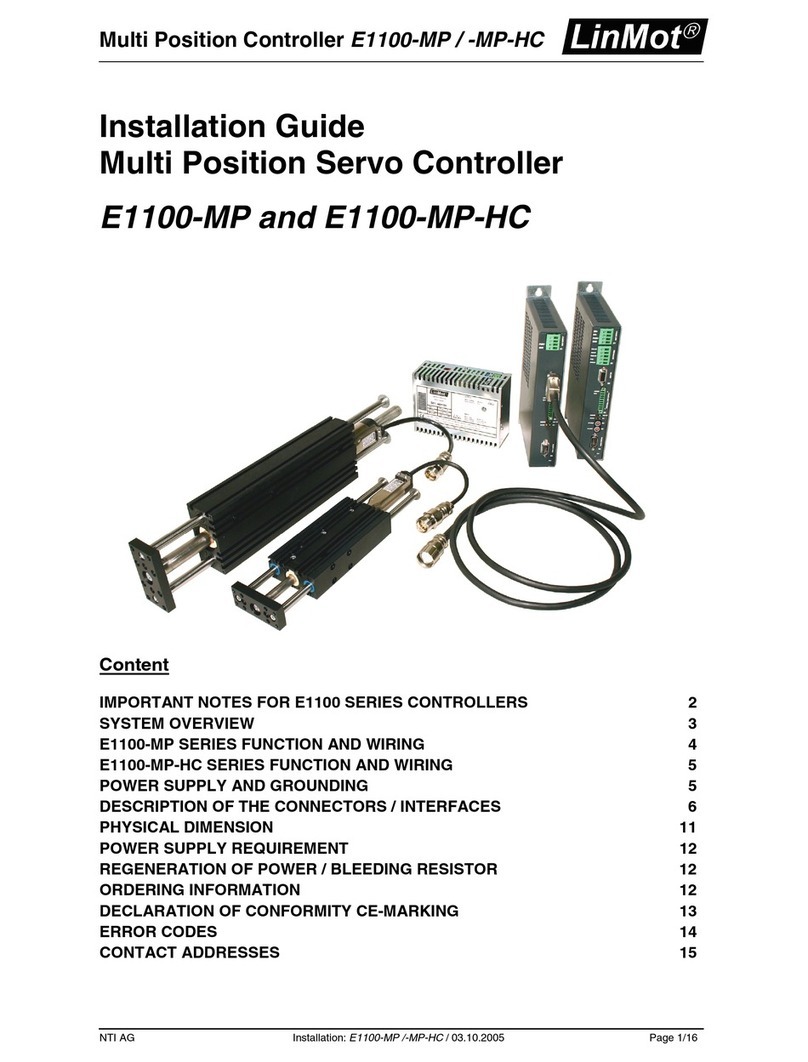
LinMot
LinMot E1100-MP User manual
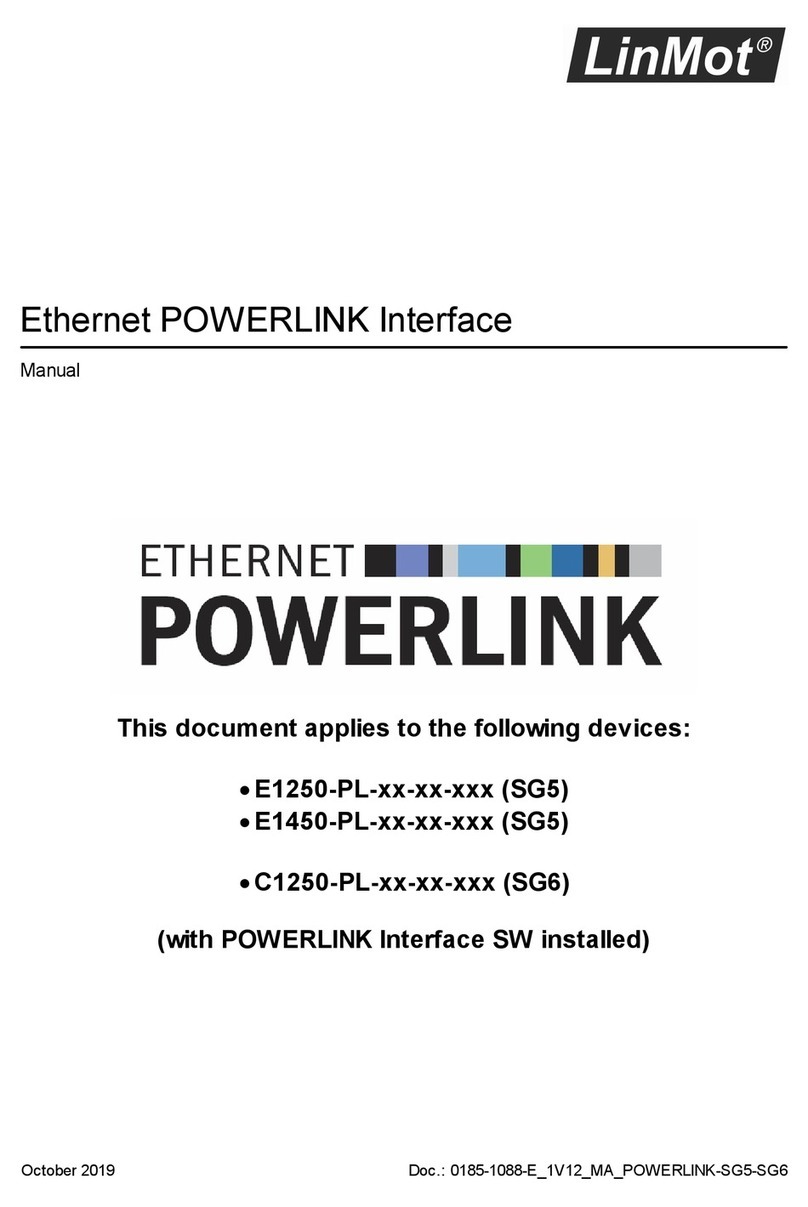
LinMot
LinMot E1250-PL Series User manual
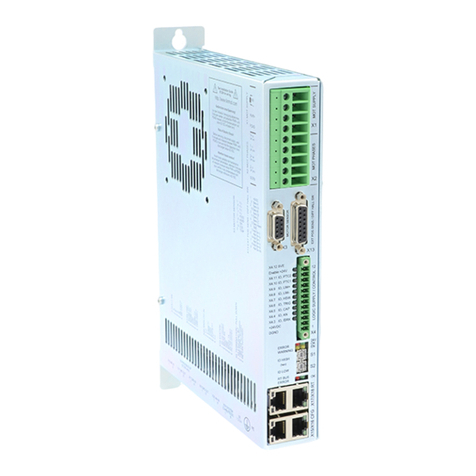
LinMot
LinMot E1250-EC-UC User manual
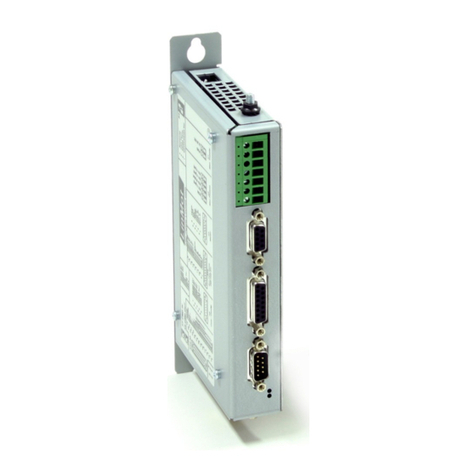
LinMot
LinMot B1100-PP User manual
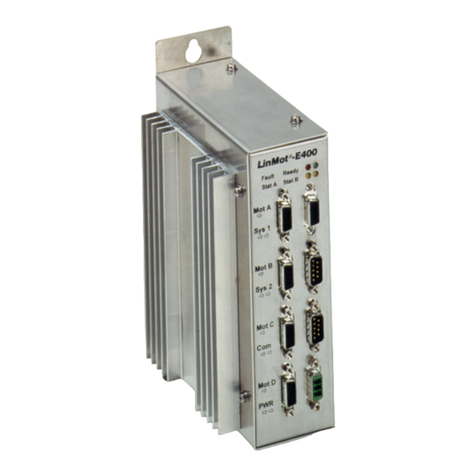
LinMot
LinMot E100 Series User manual
